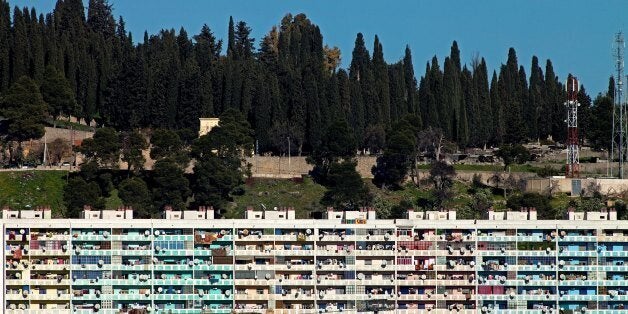
BY TRACY MORAN - OZY
Africa may be moving forward, but it’s still stuck in traffic. Gridlock and choking pollution have city planners in megacities like Kampala, Lagos and Lusaka searching for affordable, efficient solutions to their transportation troubles — and they’ve seized on glorified ski lifts.
By 2050, Africa’s urban areas are expected to house 60 percent of the continent’s population, up from 36 percent in 2010, according to the African Development Bank Group, an agency promoting local investment and poverty assistance programs. Congested roads contribute to the urban pollution that claims 49,000 lives annually in sub-Saharan Africa. But a solution is on the horizon, thanks to ropeway systems, also known as gondolas or aerial cable cars. The motorless vehicles hang from steel cables or ropes suspended from towers, and while they have been around since the 1600s, recent innovations — larger cabins and faster speeds — are transforming them from quaint gondolas into the realm of effective urban transport.
Coasting above the skyline in Constantine, Algeria, last year, it occurred to Patrick Kayemba that the stunning view and quiet ride could be just the ticket for cash-strapped cities facing a transport crunch. “There is no need for too much if enough can do,” says the executive director of FABIO, an African organization focusing on sustainable transport. Sure, it’s not a complete fix — and an aerial network can’t cover as vast a territory as bus or subway lines — but feeder systems stretching miles into and out of the city center, or other transportation hubs, can substantially ease traffic, congestion and pollution.
And the slow-moving trams of yesteryear would be replaced by new, faster cabins that cruise about 16 miles per hour and can carry up to 10,000 people an hour. Compare that with buses holding 50 passengers each or 2,000 cars with two to three passengers apiece. Aerial cable cars are also eco-friendly because they use no coal or gas; their only fuel is electricity, which comes from the grid or renewable sources.
Bigger, faster and … cheaper. They’re easy to build, require minimal maintenance and have no drivers to pay. Gondola systems can be put together in a year, while bus networks take at least five years to develop, according to Dr. Jürgen Perschon, executive director of the Hamburg-based European Institute for Sustainable Transport (EURIST). Algeria’s new system in Constantine cost $14 million to build, he says, and a comparable bus system would ring in around $25 million. Subways? They take decades to build and cost five times as much.
“People still see the technology as a low-cost amusement ride for ski resorts.”
The advantages roll on: no costly land acquisitions (other than station locations) or booting residents from their homes. Each tower takes just 4 square yards of space and can even be placed atop existing structures. And cars that soar above urban obstacles like highways, rivers or steep hills are fully accessible to passengers with wheelchairs, bicycles and strollers (only a quarter of London’s Tube stations are handicap accessible).
Austria-based cable car manufacturer Doppelmayr Seilbahnen has already installed a system in Algeria and has plans for others in Addis Ababa, Dar es Salaam, Kampala, Lusaka, Harare, Lagos, Mombasa and Nairobi. Contracts have yet to be signed, but Julia Schwärzler, Doppelmayr’s PR manager, notes that feasibility studies are complete for Kampala and Mombasa, and expects deals to be sealed early this year. “They’re jumping through our doors,” says Perschon about interested African planners. Jacob Byamukama, manager of transport planning and traffic management in Kampala, supports the concept. Assuming an ideal route can be found, “we are committed to implementation of cable car urban transport,” he says.
But is it safe? The perception is that “maintenance isn’t taken as seriously” in Africa, Perschon says. But upkeep is standardized, and the firms building the systems have a vested interest in ensuring they’re well-maintained. It’s designed to be the safest mode of public transport — but there are no guarantees. Seven people died in Singapore in 1983 when two cars plummeted to the sea after an oil rig struck the guiding cable. And the system needs reliable power in a place where blackouts are common.
Experts say plans must incorporate backup systems — diesel generators — to prevent suspended passengers from getting stuck. And the final hurdle could be public perception. “People still see the technology as a low-cost amusement ride for ski resorts,” says Steven Dale, of Creative Urban Projects in Toronto. Dale’s team helped conduct the feasibility study for Lagos, which is expected to break ground this year.
Amusement or mass transit solution? Pilot projects underway in other cities should move the needle on African urban cable car systems … stick around to see if they take off.